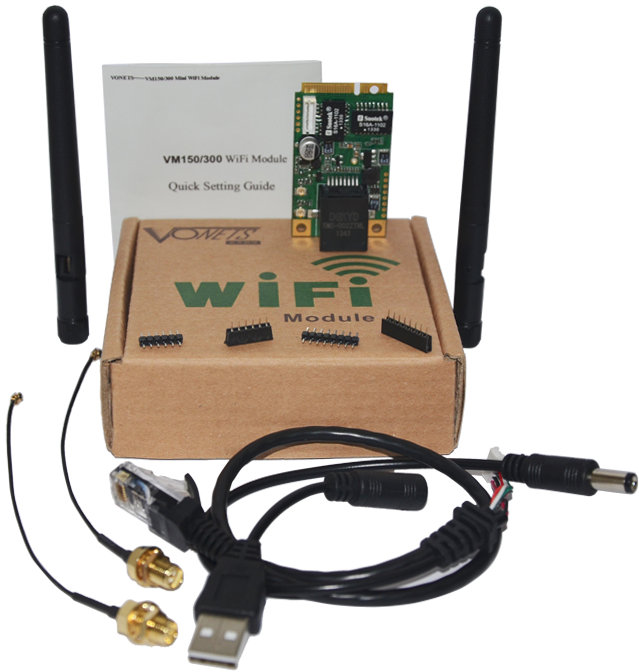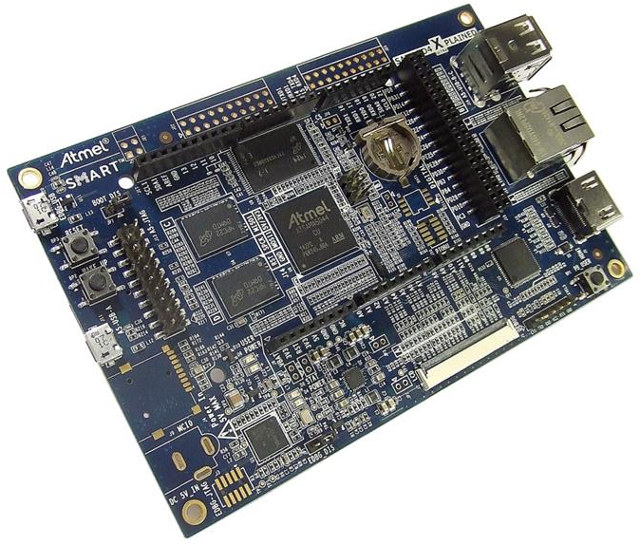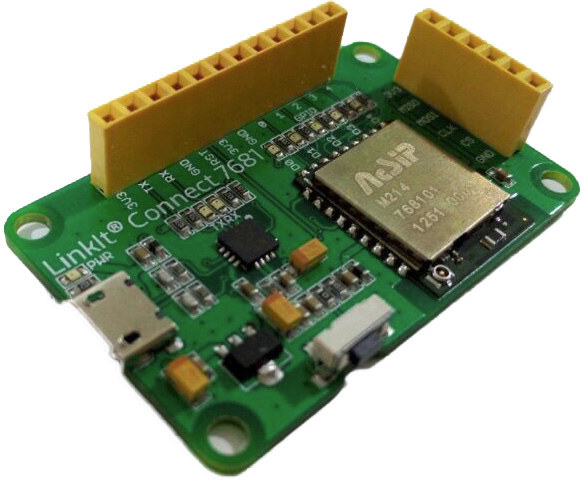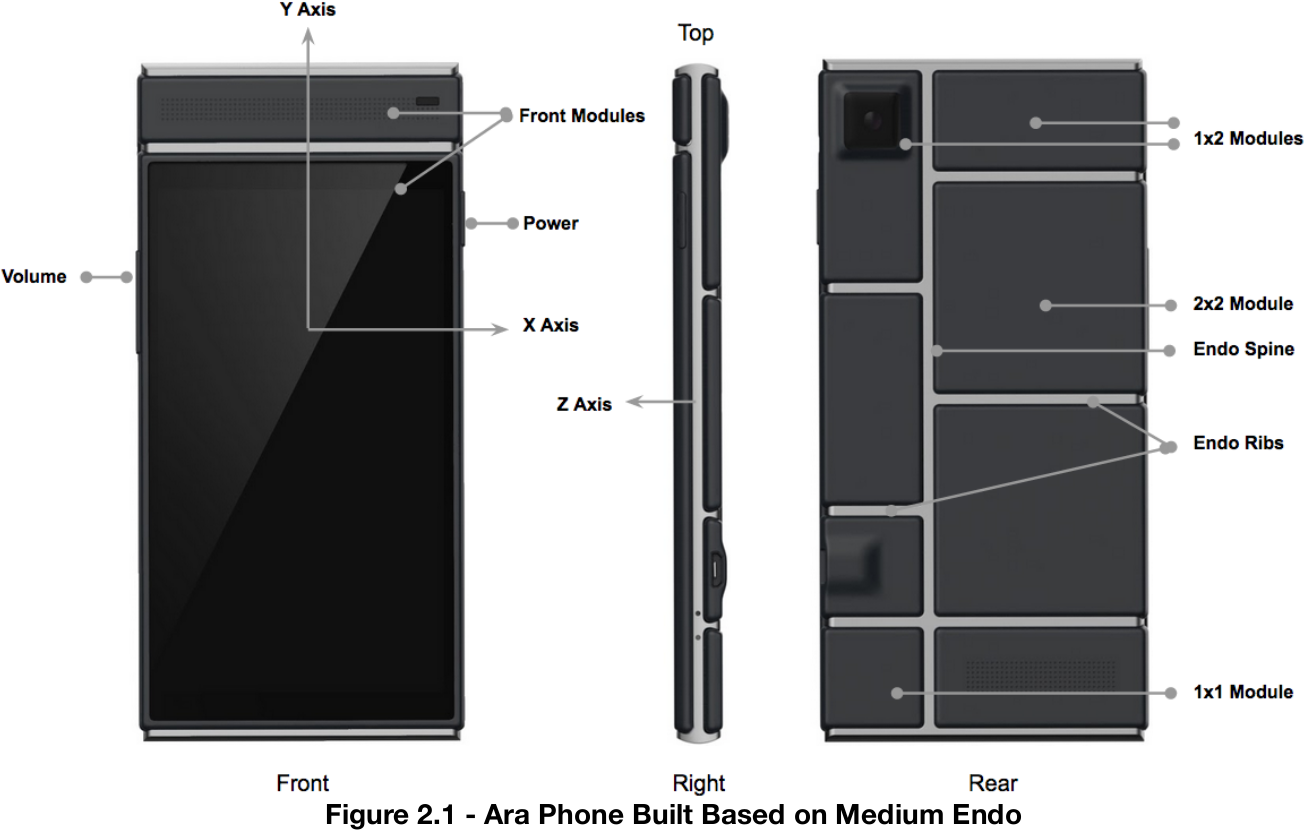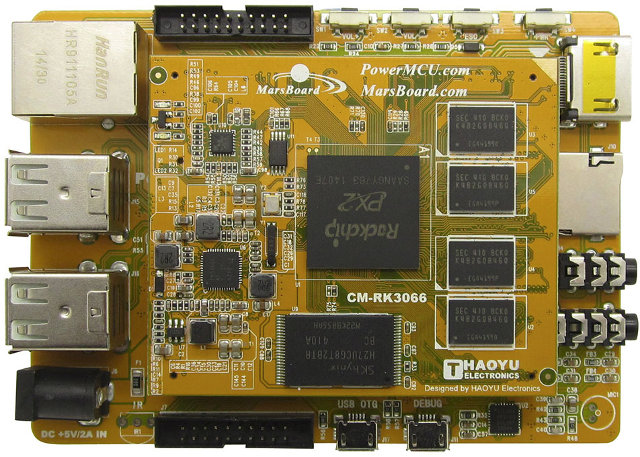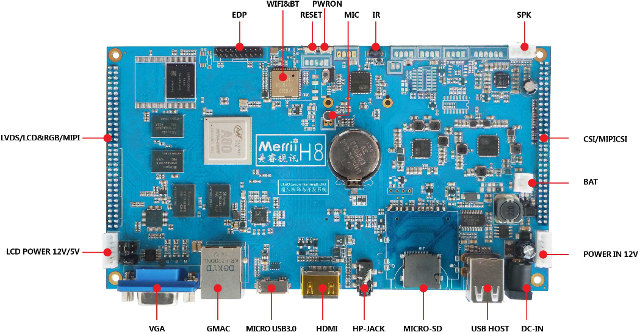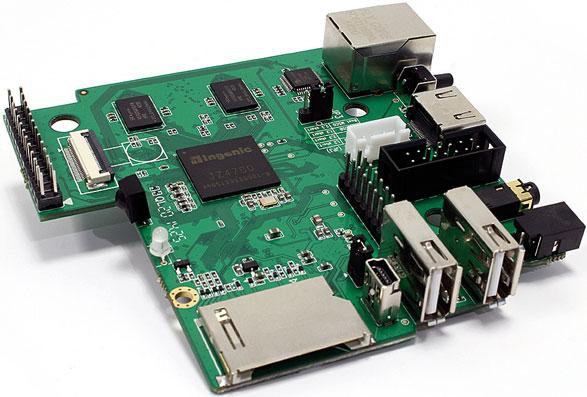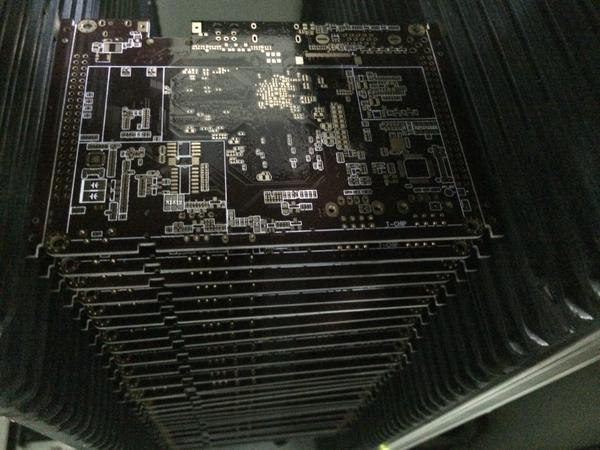Mediatek MT760 is a recent Wi-Fi SoC found in some Nexx WT3020 routers, and WRTnode development board. Both run OpenWRT and costs $17 to $30 depending on the amount of flash, and ports with the former featuring two Ethernet ports, and the latter access to GPIOs. You could probably open the case of the Nexx routers and solder some wires to get access to GPIO, and you can hack an Ethernet cable for WRTnode, but another options could be Vonets WM300 kit that includes a board with Wi-Fi and Ethernet, a cable for USB / Ethernet connection, headers for GPIOs, and two external antennas for less than $30. An OpenWRT SDK is also provided for the kit. Specifications listed for VM300 board: Processor – Mediatek MT7260N MIPS processor @ 580MHz Storage – 4MB SPI Flash (option: 8MB/16MB) for firmware System Memory – 32MB or 64MB SDRAM Connectivity Wi-Fi Single band […]
Atmel SAMA5D4 Xplained Ultra Development Board Adds HDMI, 720p Video Decoding
Atmel has introduced an upgrade to their Atmel SAMA5D3 Xplained development board with SAMA5D4 Xplained Ultra replacing SAMA5D36 by SAMA5D44 embedded micro-processor for 720p hardware video decoding support, and adding HDMI output, extra storage and memory, etc… but losing one Ethernet port. Atmel SAMA5D4 Xplained Ultra (XLUT) specifications: MPU – Atmel SAMA5D44 Cortex-A5 Microprocessor @ 536 MHz System Memory – 2x 2Gbit DDR2 memory Storage – 4 Gbit NAND Flash, 1x 4-bit SD card connector (not populated), 1x 4-bit micro SD connector, optional serial EEPROM (SPI), one EEPROM with MAC address and serial number. Connectivity – 1x Ethernet 10/100M Display – 1x LCD interface connector, 1x HDMI port USB – 1x micro USB device connector, 2x USB host connectors Debugging – 1x 20-pin J-TAG connector, 1x EDBG connector (not populated), 1x serial DBGU interface (3.3V) Expansion – Arduino R3-compatible headers, XPRO set of connectors; ADC inputs and CAN interfaces Misc […]
LinkIt Connect 7681 is a Wi-Fi IoT Board Powered by Mediatek MT7681
So it looks like Mediatek has decided to carry on with its Mediatek Labs endeavours, as after launching LinkIt ONE last year, they’re about to introduce LinkIT Connect 7681, a development board with a Mediatek MT7681 based Wi-Fi module, and access to various GPIOs. LinkIt Connect 7681 HDK (Hardware Development Kit) specifications: SoC – Mediatek MT7681 Andes N9 processor @ 80 MHz with 64KB RAM, Storage – 1MB SPI Flash for firmware Connectivity – Wi-Fi: 802.11 b/g/n for Station mode; 802.11 b/g for AP mode via a MT7681 module by AcSIP Headers – 12-pin header for UART, 5 GPIOs (also usable as software PWM), RESET, and 3.3V/5V/GND; 6-pin header for SPI, 3.3V and GND. USB – 1x micro USB for power and programming/debugging Misc – Reset push-button, 2x UART LEDs Power Supply – On-board 1A 3.3V voltage regulator (can be powered from USB connector) I/O Voltage – 3.3V for GPIO […]
Project Ara Modular Phone Update
The modular phone concept started with PhoneBloks, whose founders shortly got to work with Motorola Project Ara, and since Google bought parts of Motorola, the concept is now part a Google’s project. Project Ara Developers Conference 2015 has taken place yesterday in California, but if you’ve missed it, another one is planned in Singapore on January 21, and it will also be live-streamed. We’ve now got a bit more information, a neat video has been uploaded to YouTube showing how a battery, a (broken) display, speakers, and camera modules would slide into the phone, and a pilot project has started in Puerto Rico. Google has very recently shipped Spiral 2 developer hardware enable prototyping and development of modules for the Ara platform. The kit consists of: A board with the UniPro Switch in the Ara endoskeleton and multiple modules interfaces with UniPro Bridge ASICs (Tosbiba T6WM8XBG-0001) supporting multiple bridged and tunneled protocols; An […]
$60 MarsBoard Rockchip PX2 Development Board Runs Ubuntu, Debian, openSUSE, or Android 4.4
Haoyu Electronics has made a new board similar to their MarsBoard RK3066, but instead of using a CPU module with Rockchip RK3066, they’ve used the industrial version of the chip called Rockchip PX2 dual core Cortex A9 processor. The board is also comprised of a baseboard and CPU module (CM-PX2), and based on the name of the pictures it’s using the exact same PCB: CM-RK3066 SoM, and SOM-RK3066 baseboard, but they simply replaced RK3066 by PX2, and increased the NAND flash capacity to 8GB. CM-PX2 Computer-on-Module: SoC – Rockchip PX2 dual core ARM Cortex A9 @ 1.4 GHz + Mali-400MP4 GPU System Memory – 1GB DDR3 Storage – 8 GB NAND Power Management Unit – TPS659102 Misc – TX indicator LED use for debug, Power Indicator LED 10/100M Ethernet PHY – LAN8720A Connectors – 2x 100- pin for baseboard connection, 40-pin connector (unsoldered) Dimensions – 70 x 58 mm SOM-RK3066 […]
Merrii A80 Hummingbird Octa-core Development Board Supports HDMI, VGA, and eDP Video Outputs
Up to now at least three boards based on Allwinner A80 processor were available: A80 OptimusBoard by Merrii, pCDuino8 by Linksprite, and Cubieboard4 by Cubitech, and the first two boards are basically the same. Merrii has now introduced a new board which they call “A80 Hummingbird H8”, with more features and ports including HDMI, VGA and eDP video outputs, LVDS / MIPI DSI display interfaces, MIPI CSI camera interface, an RTC with battery and more. Merri H8 specifications: SoC – AllWinner A80 octa-core processor with 4x Cortex 15, 4x Cortex A7 cores in big.LITTLE configuration with Imagination Technologies PowerVR GC6230 GPU compliant with OpenGL ES 3.0/2.0/11, OpenCL 1.1, and DirectX 9.3 System Memory – 2GB DDR3 Storage – 8GB internal storage (Sandisk SDIN7DU2 iNAND Flash), micro SD slot up to 32 GB Video Output/ Display Interfaces HDMI 1.4 up to 4K UHD resolution VGA port eDP v1.2 up to 2560×1600 @ […]
MIPS Creator CI20 Development Board is Now Available for $65
When Imagination Technologies first announced their developer program for MIPS Creator CI20 board, they did not disclose the price, but based on the specifications I estimated that a decent price would be $70 o $80. The company has now announced broad availability of the board, which can be pre-ordered for just $65 or 50 GBP depending on the continent you live in, with shipping scheduled for the end of January 2015. This development board is based on Ingenic JZ4780 dual core MIPS processor with 1GB DDR3, 8GB flash, and features an HDMI output up to 1080p, Audio in and out, a Fast Ethernet RJ45 port, a Wireless module with Bluetooth 4.0 and Wi-Fi, an IR receiver, and expansion headers. Several projects have already been ported by developers who got their free board a few months, ago including XBMC/Kodi, several games such as Spiral Episode 1, and beside Android 4.4 and […]
Firefly-RK3288 Development Board in Mass Production, Selling for $140
Firefly-RK3288 development board has been an interesting, yet confusing story, at least to me. We’ve first heard about the Firefly board on July, but I was privately told in September that the board would only be sold in China by a T-Chip sales person, only to see it become available for $189 on Ebay, as well as on Taobao a few days later. But those first boards may have only been engineering sample, or more likely from a limited trial runs, as the company has now announced mass production had started. Let’s refresh our memory with the specifications: SoC – Rockchip 3288 quad core ARM Cortex A12 / A17 up to 1.8 GHz with Mali-T764 GPU supporting OpenGL ES 1.1/2.0 /3.0, and OpenCL 1.1 System Memory – 2G DDR3 Storage – 16 GB eMMC flash + micro SD slot Video Output HDMI 2.0 up to 3840×2160@60p VGA out (D-SUB connector) Dual MIPI, Dual LVDS and and […]


